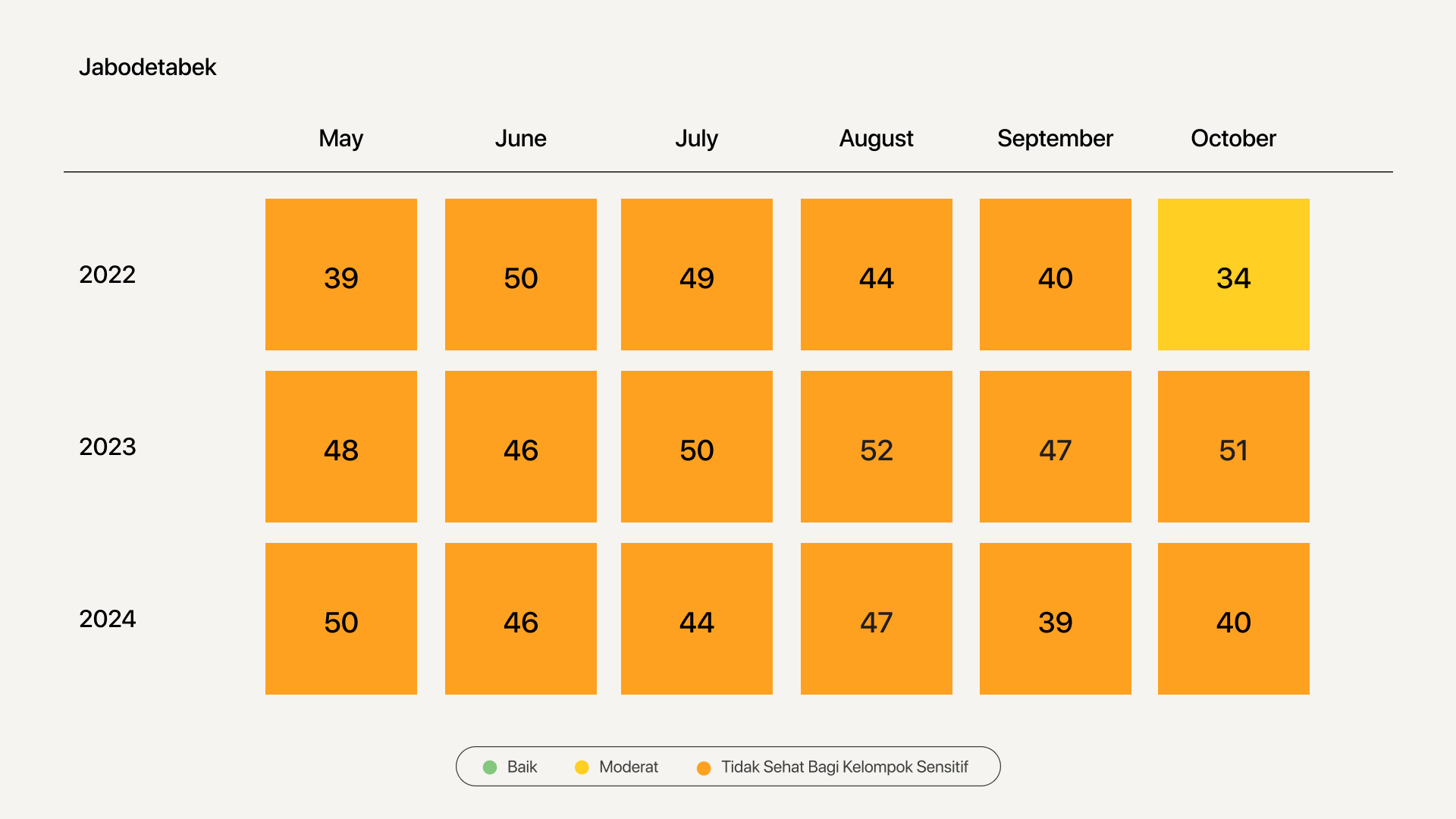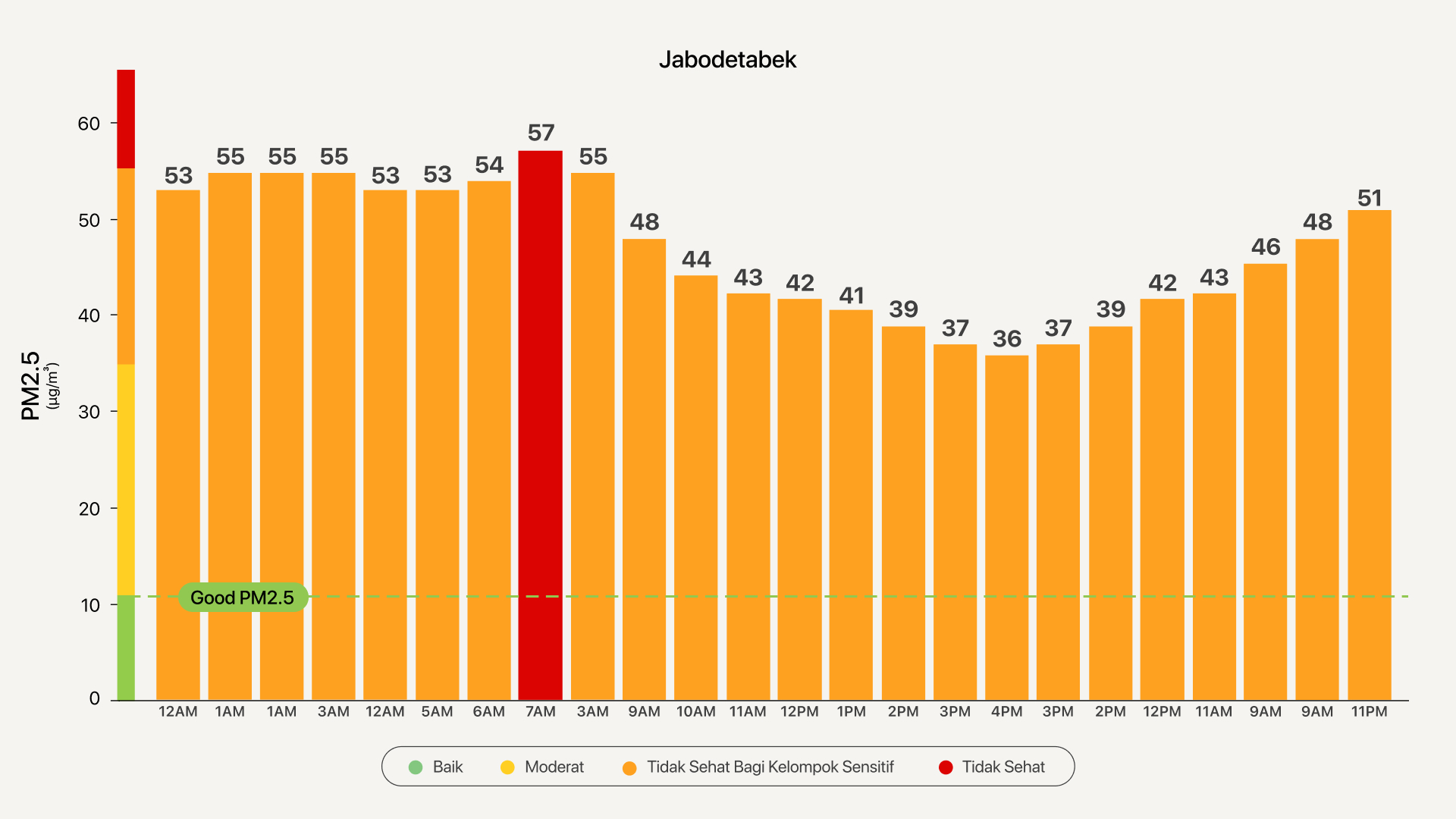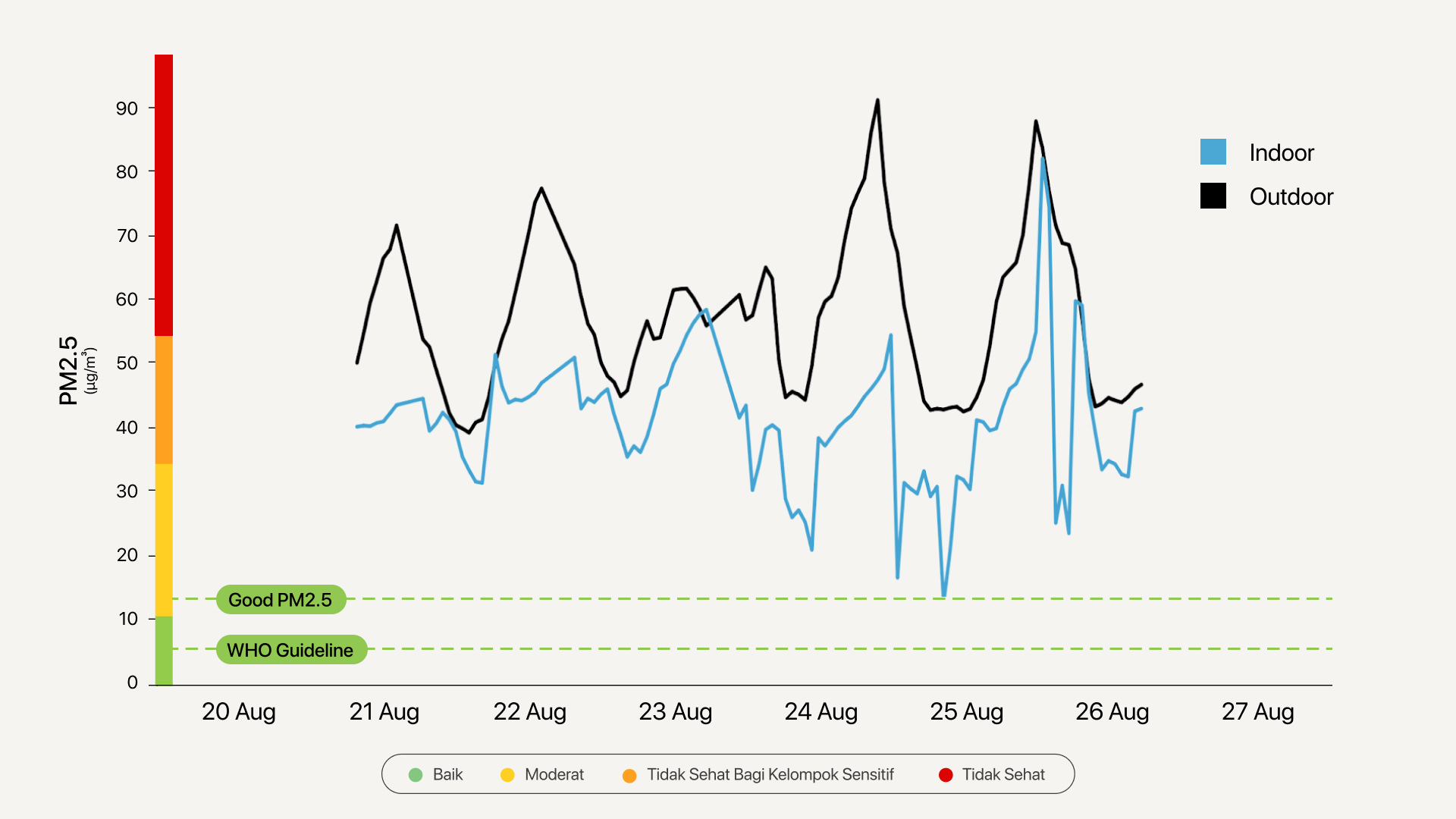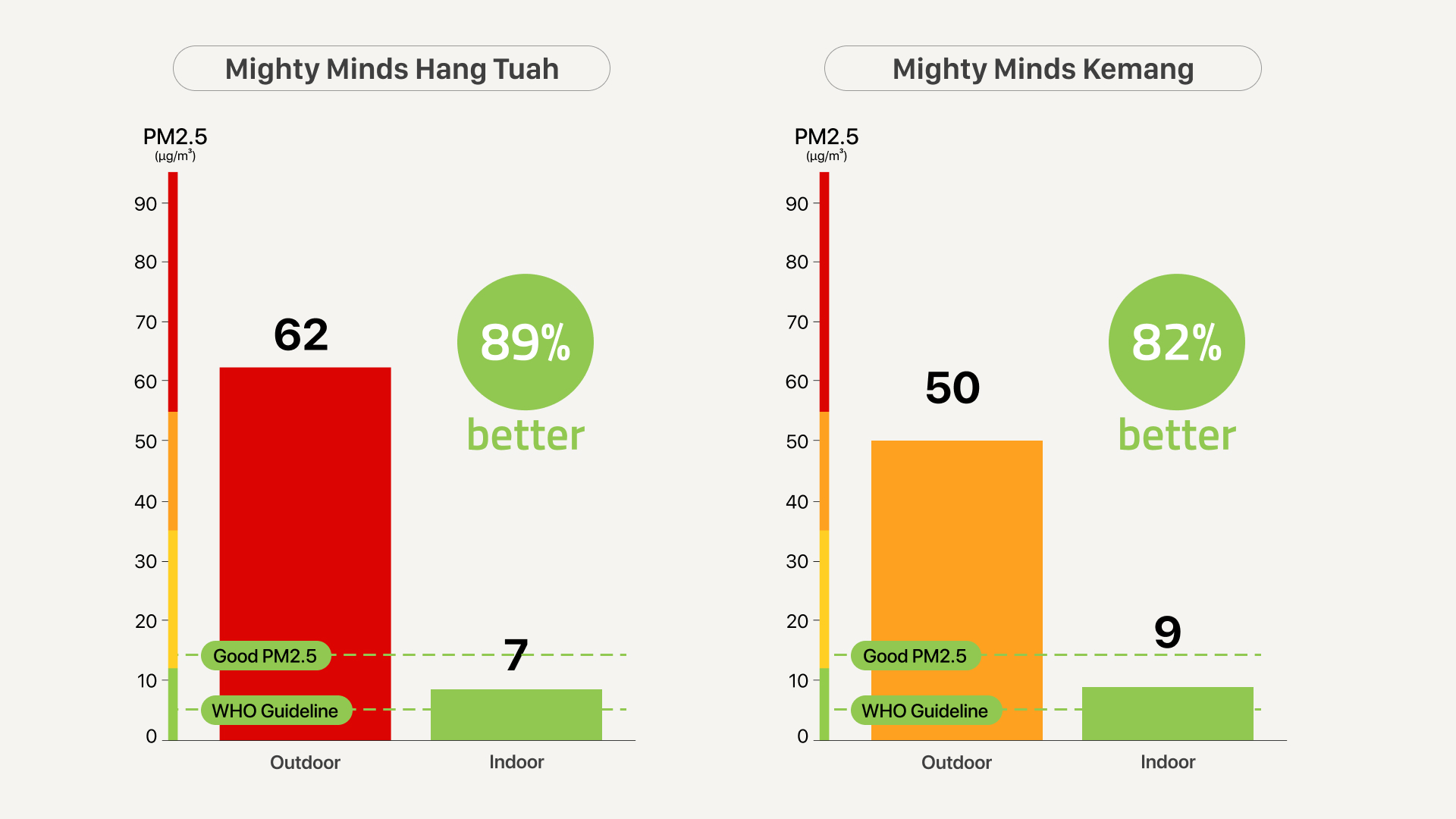LEARN / ARTICLE
Beyond the Outdoors, Tackling Summer Air Pollution and High PM2.5 in School Hours with CAZ
Air quality can change as seasons shift, pollution during the dry season would be much higher than in the rainy season. This happens due to the difference of atmospheric conditions in each season. Looking at monthly PM2.5 averages from May to October, some areas experienced elevated levels during what is often considered the summer or dry season period.

For instance, in August 2023, Jabodetabek recorded an average PM2.5 of 52 µg/m³. These figures were notably higher than levels seen in other months like May or October in some years. This data suggests that the period around August and September can indeed bring challenging air quality conditions in these regions.
Examining the daily average PM2.5 levels reveals patterns throughout the day, with specific attention often given to critical periods like school hours. Charts for Jabodetabek and DKI Jakarta show how PM2.5 levels fluctuate over 24 hours, highlighting the period from 7 AM to 2 PM (hours 7-14). During these hours, which correspond with typical school times, PM2.5 levels are often elevated.

(24-hour Average of PM2.5 in May to August 2024)
For example, in the provided daily data for Jabodetabek, PM2.5 levels range from the low 40s to high 50s during hours 7-14, including a peak of 57 µg/m³ at 7 AM. This highlights the importance of considering air quality during these critical daytime periods when many people, especially children, are indoors at schools or other facilities.

It is a common misconception that simply being indoors provides protection from air pollution. However, research indicates that indoor spaces often exceed healthy air quality limits. Nafas conducted air quality assessments in Jakarta and found that up tp 100% outdoor air enters to the indoor. So, the data would show that the indoor air quality are not better as the outdoor air.
One approach to address indoor air quality, particularly when outdoor pollution is high during periods like the summer months, is implementing a Clean Air Zone. A Clean Air Zone is described as an end-to-end indoor air quality subscription service designed to provide tailored solutions to improve air quality in homes and offices. The service aims to reduce indoor air pollution by up to 90%, hassle-free. It can be applied to various spaces including homes, offices, gyms, and schools.
These are the difference between indoor and outdoor data during the summer time in our CAZ school.


Clean Air Zone can help ensure a healthier environment despite challenging outdoor conditions. Utilizing a Clean Air Zone system during periods of high PM2.5, like those potentially seen in the summer months according to the data, allows building to maintain good indoor air quality. Especially in the schools where our kids spend most their time. As the charts above, CAZ can maintain up to 90% good indoor air quality better than the outdoor.
Enjoy a free Healthy Air subscription with promo code: HEALTHYCAZ
Want to learn more? Click here.
